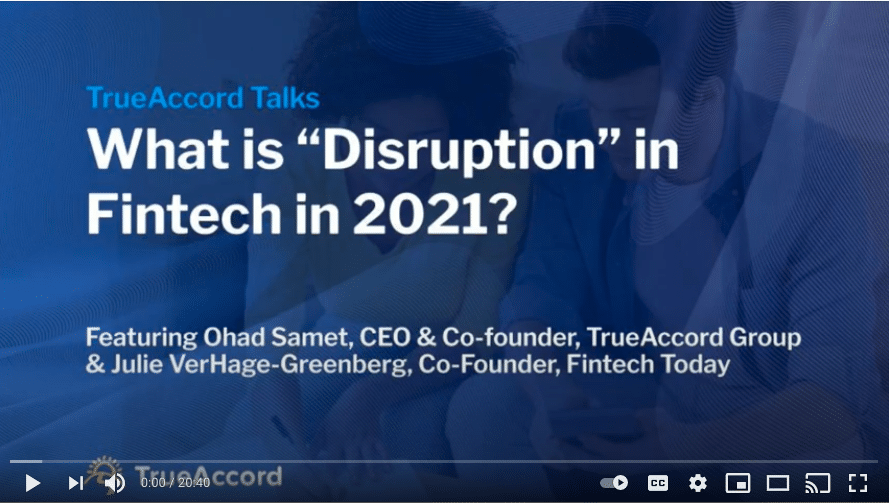
Halfway through 2021, e-commerce and consumer spending continue to see the impact of government stimulus payments while consumers look for new ways to invest and leverage their money. Simultaneously, all sectors of fintech grew during the pandemic, and this growth has not shown signs of stopping. Investment and lending platforms have grown in users by the highest percentage during the pandemic — with increases of 23 and 25 percent, respectively (McKinsey).
With the digitization of banking and financial services now firmly part of our new normal, is “disruption” still possible in fintech in 2021? TrueAccord co-founder and CEO, Ohad Samet, recently sat down with Julie VerHage-Greenberg of Fintech Today to discuss what the next horizon of fintech disruption will look like — and how financial institutions of all types can stay ahead of the curve and create groundbreaking solutions this year.
Watch the full “TrueAccord Talks” episode for more insights, but key trends to watch in fintech disruption in 2021 include:
- Solving “structural problems”: Fintechs, unlike many traditional financial services companies, are not just putting old products online and calling them digital, but rethinking the approach to existing problems and building new, better solutions.
- Digitization for customer experience: While many companies have focused on digitizing the customer experience, those that haven’t may begin to feel the pressure to adapt. With digitization increasingly being driven by consumer demand and expectation, financial service providers that don’t integrate the consumer experience into their offerings will lose out to those that do.
- Affordable financial services: With so many new fintech players in the industry, competition and innovation continue to spur more efficient and affordable services for consumers. Old products will be replaced with new banks, payment options and wage access, and more will focus on credit care and access to cater to consumers.